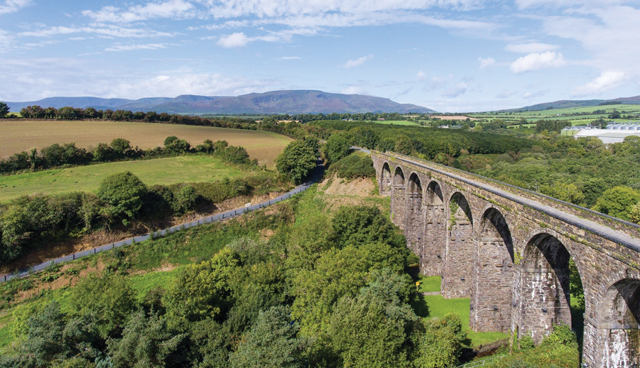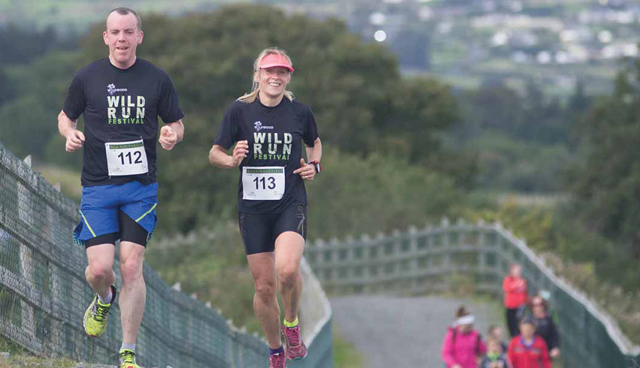The future of greenways and active tourism

As active tourism grows and the decarbonisation of transport necessitates a shift from personal vehicles to walking and cycling where possible, greenways, blueways and walking and cycling infrastructure will take on a new importance in the decade ahead.
Cycling and walking
The Programme for Government’s (PfG) commitment of 10 per cent of every year’s transport capital budget to walking and another 10 per cent per year for cycling has come as welcome news as Ireland seeks to redress its transport imbalance and provide more avenues for active tourism and leisure throughout the country.
The PfG states that both cycling and electric cycling have “enormous potential to facilitate a high proportion of daily trips if we can provide an environment which protects and prioritises this mode of transport”. Along with the monetary commitments, the Programme pledges the immediate mandating of local authorities to carry out assessments of their road networks in order to determine where space be reallocated for cyclists and pedestrians.
The Programme’s commitments for cycling and walking “will deliver a five-year, multi-annual funding programme linked with a specific target of new separated cycling and walking infrastructure which will be delivered or under construction by end 2024”. What shape this project will take and the specifics involved are not detailed within the PfG.
The total spending on walking and cycling will also feature committed funding from the Department of Transport, Tourism and Sport for active travel and greenways, along with the already agreed allocation of pedestrian and cycling infrastructure from the BusConnects programme. The PfG also promises to: mandate that local authorities to appoint a Cycling Officer to carry out their assessments; establish Regional Cycle Design Offices co-located in the Regional Design Offices for roads to assist local authorities; mandate the Department of Communications, Climate Action and Environment to work with schools, the Green Schools programme, local authorities and local initiatives in order to “dramatically increase” the number of children cycling and walking to school; widen the eligibility of the Bike to Work scheme; expand the Cycle Right programme for school children; and conduct a review of road traffic policy and legislation to “prioritise the safety of walking and cycling”.
Cyclist.ie, the Irish Cycling Advocacy Network, who have routinely called for 10 per cent of the transport budget to be allocated towards cycling infrastructure, welcomed the news of their funding demands being met. The Network said that they were “delighted” to see that the “government formation talks appear to have recognised this urgent need to invest in active travel”.
Spending on cycling had amounted to less than 2 per cent of the transport capital spending before the PfG, according the Cyclist.ie’s 2020 Budget submission; the Third Report and Recommendations of the Citizens’ Assembly, the Joint Oireachtas Committee on Climate Action and the Climate Action Plan had all previously endorsed the increasing of this proportion to 10 per cent. On the funding, Cyclist.ie said: “Our expectations are that this funding will be spent on high quality cycling infrastructure in out towns and cities so that we can grow cycling to levels common in many continental countries. We also urgently need to redress the gender balance in cycling (currently only 27 per cent of all persons commuting are female, as per Census 2016 data).”
A 2019 study found that each kilometre driven by car in the EU incurs external costs of €0.11, while each kilometre cycled brings benefits of €0.18 and each kilometre walked brings benefits of €0.37, further incentivising the need to promote active travel.

Greenways
In the realm of active travel, greenways can play a key role. In the PfG, the Government has committed to the development of an integrated National Greenways Strategy, with the “potential to transform modal shift, improve air quality and public health”. The Programme says that this commitment to cycling will allow the Government “to achieve the huge ambition of developing an integrated national network of greenways to be used by commuters, leisure cyclists and tourists”.
A coordinated approach between government, local authorities and relevant agencies is promised in order to deliver on this goal. Notable projects mentioned within the PfG include a pledge to support the cross-border Sligo-Enniskillen Greenway and a pledge to continue the funding of long-term projects such as the Galway to Dublin Greenway, the Fingal Coastal Way and the extension of Waterford’s greenway into the city centre.
Similarly, the PfG promises to “invest in and promote blueways and recreational trails for the benefit of the local community and tourists alike”, along with the promised expansion of the Walks Scheme to a target of 80 trails.
The first signs of progress with regard to funding for these types of projects following the formation of the Government came in July when Minister for Climate Action and Communication Networks and Transport Eamon Ryan TD announced €4.5 million of funding for 26 greenway projects across the country. The funding was allocated under the Carbon Tax Fund 2020. Ryan commented upon the announcement that he was “delighted” to “support the Greenways Strategy and help local authorities prepare greenway projects to be ready for construction funding in the coming years”.
The Minister made particular mention of his happiness in granting funding for greenway projects in Longford, Roscommon and Offaly, with the midlands area being supported by the Just Transition Fund. He also stressed the importance of the Sligo Leitrim Northern Counties Railway (SLNCR) Greenway “in terms of continued work on a cross-border basis”.
Overall, 21 of the State’s 26 counties received funding boosts for various greenway projects, with SLNCR Greenway’s proposed 75km section from Sligo Town to Blacklion, Cavan receiving €500,000. As the Minister stated, the funding awarded at this stage is pre-construction, with feasibility studies, preliminary design, environmental evaluations and similar stages of planning being the main focus for both new projects and proposed extensions to already existing greenways, such as the granting of €150,000 to Limerick County Council to conduct a feasibility study on a 22km extension of the Great Southern Greenway from Rathkeale to Patrickswell, through Adare.
Other notable amounts of funding received include what is named as the Sligo Greenway, a 55.5km greenway from Cooloney, Sligo to Bellaghy, Cavan. The greenway was granted €300,000 for preliminary design and environment evaluation. The largest amount awarded was the €750,000 awarded to cover a feasibility study, route option selection, preliminary design, environmental evaluation, land procurement and planning process for a 26.5km section of the Boyne Greenway in Meath. Following the criticism of the Programme for Government’s lack of concrete targets and concerted plans of action, it appears that greenways and active travel are at least one area where progress has been prioritised and quickly accelerated.





